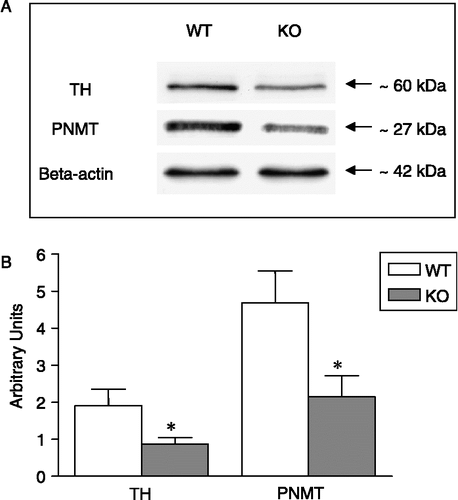Figures & data
Figure 1 Representative bright-field photomicrographs illustrating the hybridisation signal in the PVN of WT (left panels: A1, B1, C1) and nNOS KO mice (right panels: A2, B2, C2) for (A) AVP mRNA, (B) oxytocin mRNA and (C) CRH mRNA. Scale bar: 20 μm.
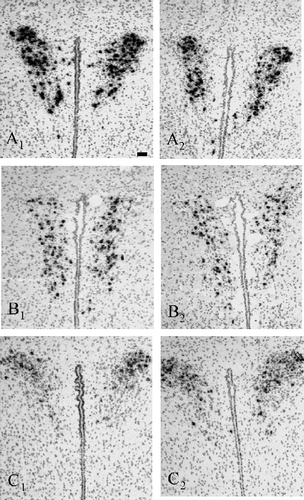
Figure 2 Hybridisation signal for (A) AVP mRNA, (B) oxytocin (OXT) mRNA and (C) CRH mRNA in the PVN of WT and nNOS KO mice under resting conditions were measured bilaterally. Data are expressed as means ± SEM (n = 5–6 mice per group). **p < 0.01 vs. WT, Mann–Whitney U-test.
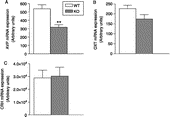
Figure 3 Plasma concentrations of (A) ACTH and (B) corticosterone in nNOS KO and WT mice under resting conditions (control) and 5, 15 and 50 min after a 10-min forced swimming session (T5, T15 and T60, respectively). Data are expressed as means ± SEM (n = 6–8 mice per group). In (A): *p < 0.05 vs. the respective control. In (B): **p < 0.01 vs. the respective controls. Two-way ANOVA followed by Fisher's LSD post hoc analysis.
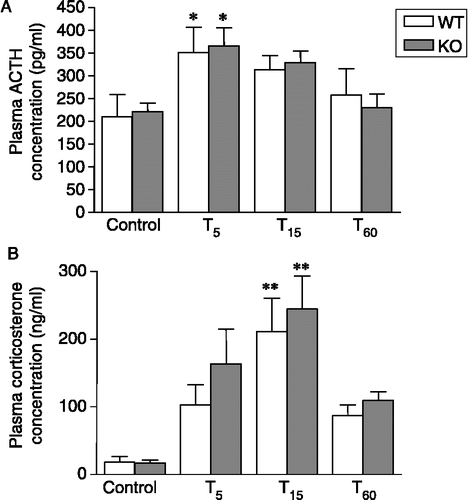
Figure 4 Plasma concentrations of epinephrine in nNOS KO and WT mice under resting conditions (control) and 5, 15 and 50 min after a 10-min forced swimming session (T5, T15 and T60, respectively). Data are expressed as means ± SEM (n = 6–8 mice per group). *p < 0.05 vs. WT control and T60 and vs. KO T15. Two-way ANOVA followed by Fisher's LSD post hoc analysis.
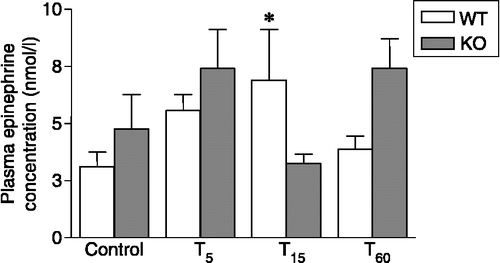
Figure 5 Western blot analysis of TH and PNMT in adrenal gland homogenates pooled from WT (n = 7) and KO mice (n = 8). (A) Gel lanes for TH, PNMT and beta-actin. The positions of the respective molecular weight markers are indicated. (B) Semi-quantitative histogram depicting TH and PNMT expression. Data were normalised to the respective beta-actin values. *p < 0.05 vs. WT, Mann–Whitney U-test.
